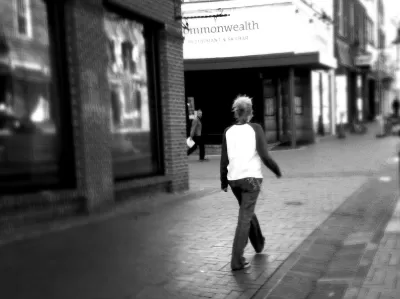Gender equality has never played such a prominent role in the design of public and urban spaces. The world needs more than superficial, reactionary measures to address the long history of public space as the physical realm of patriarchy.

"Urban planning and public-space design has long responded to existing uses, rather than creating opportunities for entirely new behaviors," according to an article by Jennifer Gardner and Larissa Begault in describing the kind of typical, reactionary approach to gender equality that has been celebrated as progress in the field for decades now.
Instead, the authors argue, gender equality in urban design requires a different approach that addresses root causes. "As social scientists, policymakers, and designers increasingly talk about pushing for inclusion in the field [of urban design] and designing for gender equality, we need to make sure actions address root causes, rather than just solve for superficial manifestations of a larger problem."
The article compares and contrasts examples from Vienna (an example of the first, reactionary approach) to New York City, Toronto, Rio de Janeiro, and more for the latter, deeper approach.
FULL STORY: How Better Urban Planning Can Improve Gender Equality

Planetizen Federal Action Tracker
A weekly monitor of how Trump’s orders and actions are impacting planners and planning in America.

Maui's Vacation Rental Debate Turns Ugly
Verbal attacks, misinformation campaigns and fistfights plague a high-stakes debate to convert thousands of vacation rentals into long-term housing.

Restaurant Patios Were a Pandemic Win — Why Were They so Hard to Keep?
Social distancing requirements and changes in travel patterns prompted cities to pilot new uses for street and sidewalk space. Then it got complicated.

In California Battle of Housing vs. Environment, Housing Just Won
A new state law significantly limits the power of CEQA, an environmental review law that served as a powerful tool for blocking new development.

Boulder Eliminates Parking Minimums Citywide
Officials estimate the cost of building a single underground parking space at up to $100,000.

Orange County, Florida Adopts Largest US “Sprawl Repair” Code
The ‘Orange Code’ seeks to rectify decades of sprawl-inducing, car-oriented development.
Urban Design for Planners 1: Software Tools
This six-course series explores essential urban design concepts using open source software and equips planners with the tools they need to participate fully in the urban design process.
Planning for Universal Design
Learn the tools for implementing Universal Design in planning regulations.
Heyer Gruel & Associates PA
JM Goldson LLC
Custer County Colorado
City of Camden Redevelopment Agency
City of Astoria
Transportation Research & Education Center (TREC) at Portland State University
Jefferson Parish Government
Camden Redevelopment Agency
City of Claremont





























